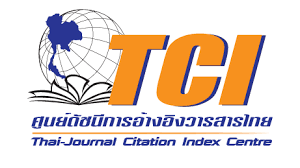Differentiation of malignant and benign breast lesions with diffusion-weighted imaging: What is the optimum apparent diffusion coefficient value?
DOI:
https://doi.org/10.46475/asean-jr.v25i3.878Keywords:
ADC, Benign breast lesion, DWI, Malignant breast leision, MRIAbstract
Background and objective: To determine the optimum apparent diffusion coefficient (ADC) value in differentiating benign from malignant breast lesions.
Materials and Methods: The study is a retrospective review of the patients who underwent breast magnetic resonance imaging (MRI) at King Chulalongkorn Memorial Hospital between January 2017 and May 2020. ADC values were measured by placement of region of interest (ROI) within the breast lesions using Philips DynaCAD breast analysis system and comparing it with histopathological diagnosis. A receiver-operating-characteristics (ROC) analysis was plotted and the area under the curve (AUC) was evaluated to find the ideal ADC value in the differentiation of benign and malignant breast lesions.
Results: Two hundred and ten lesions in 163 female patients were included in the present study. One hundred twenty-six lesions (60%) were malignant and eighty-four lesions (40%) were benign. The mean ADC values of malignancy (0.913x10-3 mm2/s) were statistically lower than that of benign lesions (1.080x10-3 mm2/s) (mean difference 0.169x10-3 mm2/s, P < 0.001). According to the ROC analysis, the optimum cut-off ADC value of 0.991x10-3 mm2/s was an excellent predictor for differentiated benign and malignant breast lesions (AUC = 0.835, sensitivity 78.6%, specificity 82.5%, accuracy 81%, PPV 85.3% and NPV 75%).
Conclusion: Diffusion-weighted imaging (DWI) was an effective MRI sequence to assess breast cancer by using ADC value as a key parameter in addition to other important imaging findings from MRI. The present study showed the mean ADC value of malignancy was statistically significantly lower than that of benign lesions. The cut-off ADC value of 0.991x10-3 mm2/s had good specificity, accuracy, and PPV to differentiate benign from malignant breast lesions.
Downloads
Metrics
References
Seely JM, Alhassan T. Screening for breast cancer in 2018— what should we be doing today? Curr Oncol [Internet]. 2018 [cited 2024 Aug 13];25(Suppl 1):115. Available from: https://www.ncbi.nlm.nih.gov/pmc/articles/PMC6001765/. DOI: https://doi.org/10.3747/co.25.3770
Akram M, Iqbal M, Daniyal M, Khan AU. Awareness and current knowledge of breast cancer. Biol Res [Internet]. 2017 [cited 2024 Aug 13];50:33. Available from: https://www.ncbi.nlm.nih.gov/pmc/articles/PMC5625777/. DOI: https://doi.org/10.1186/s40659-017-0140-9
Roganovic D, Djilas D, Vujnovic S, Pavic D, Stojanov D. Breast MRI, digital mammography and breast tomosynthesis: comparison of three methods for early detection of breast cancer. Bosn J Basic Med Sci [Internet]. 2015 [cited 2024 Aug 13];15:64-8. Available from: https://www.ncbi.nlm.nih.gov/pmc/articles/PMC4690445/. DOI: https://doi.org/10.17305/bjbms.2015.616
Gilbert FJ, Pinker-Domenig K. Diagnosis and staging of breast cancer: When and how to use mammography, tomosynthesis, ultrasound, contrast-enhanced mammography, and magnetic resonance imaging. 2019 Feb 20. In: Hodler J, Kubik-Huch RA, von Schulthess GK, editors. diseases of the chest, breast, heart and vessels 2019-2022: diagnostic and interventional imaging [Internet]. Cham (CH): Springer; 2019 [cited 2024 Aug 13]. Chapter 13. Available from: https://www.ncbi.nlm.nih.gov/books/NBK553859/.
Guo R, Lu G, Qin B, Fei B. Ultrasound imaging technologies for breast cancer detection and management: a review. Ultrasound Med Biol [Internet]. 2018 [cited 2024 Aug 13];44:37–70. Available from: https://www.ncbi.nlm.nih.gov/pmc/articles/PMC6169997/. DOI: https://doi.org/10.1016/j.ultrasmedbio.2017.09.012
Wang Y, Chen H, Li N, Ren J, Zhang K, Dai M, et al. Ultrasound for breast cancer screening in high-risk women: results from a population-based cancer screening program in China. Front Oncol [Internet]. 2019 [cited 2024 Aug 13];9:286. Available from: https://www.ncbi.nlm.nih.gov/pmc/articles/PMC6491776/. DOI: https://doi.org/10.3389/fonc.2019.00286
Maric J, Boban J, Ivkovic-Kapicl T, Djilas D, Vucaj-Cirilovic V, Bogdanovic-Stojanovic D. Differentiation of breast lesions and distinguishing their histological subtypes using diffusion-weighted imaging and ADC values. Front Oncol [Internet]. 2020 [cited 2024 Aug 13];10:332. Available from: https://www.ncbi.nlm.nih.gov/pmc/articles/PMC7083136/. DOI: https://doi.org/10.3389/fonc.2020.00332
Ren C, Zou Y, Zhang X, Li K. Diagnostic value of diffusion weighted imaging derived apparent diffusion coefficient and its association with histological prognostic factors in breast cancer. Oncol Lett [Internet]. 2019 [cited 2024 Aug 13];18:3295-303. Available from: https://www.ncbi.nlm.nih.gov/pmc/articles/PMC6704298/. DOI: https://doi.org/10.3892/ol.2019.10651
Chen X, He XJ, Jin R, Guo YM, Zhao X, Kang HF, et al. Conspicuity of breast lesions at different b values on diffusion-weighted imaging. BMC Cancer [Internet]. 2012 [cited 2024 Aug 13];12:334. Available from: https://www.ncbi.nlm.nih.gov/pmc/articles/PMC3464932/. DOI: https://doi.org/10.1186/1471-2407-12-334
Partridge SC, Nissan N, Rahbar H, Kitsch AE, Sigmund EE. Diffusion-weighted breast MRI: clinical applications and emerging techniques. J Magn Reson Imaging [Internet]. 2017 [cited 2024 Aug 13];45:337–55. Available from: https://www.ncbi.nlm.nih.gov/pmc/articles/PMC5222835/. DOI: https://doi.org/10.1002/jmri.25479
Pereira FP, Martins G, Figueiredo E, Domingues MN, Domingues RC, da Fonseca LM, et al. Assessment of breast lesions with diffusion-weighted MRI: comparing the use of different b values. AJR Am J Roentgenol [Internet]. 2009 [cited 2024 Aug 13];193:1030–5. Available from: https://www.ajronline.org/doi/full/10.2214/AJR.09.2522. DOI: https://doi.org/10.2214/AJR.09.2522
Surov A, Meyer HJ, Wienke A. Can apparent diffusion coefficient (ADC) distinguish breast cancer from benign breast findings? A meta-analysis based on 13 847 lesions. BMC Cancer [Internet]. 2019 [cited 2024 Aug 13];19:955. Available from: https://www.ncbi.nlm.nih.gov/pmc/articles/PMC6794799/. DOI: https://doi.org/10.1186/s12885-019-6201-4
The jamovi project : jamovi. Version 2.3 [software]. 2022 [cited 2024 Aug 13]. Available from: https://www.jamovi.org.
Shao G, Fan L, Zhang J, Dai G, Xie T. Association of DW/DCE-MRI features with prognostic factors in breast cancer. Int J Biol Markers [Internet] 2017 [cited 2024 Aug 13];32:e118–25. Available from: https://journals.sagepub.com/doi/10.5301/jbm.5000230?url_ver=Z39.88-2003&rfr_id=ori:rid:crossref.org&rfr_dat=cr_pub%20%200pubmed. DOI: https://doi.org/10.5301/jbm.5000230
Bozkurt Bostan T, Koç G, Sezgin G, Altay C, Fazıl Gelal M, Oyar O. Value of apparent diffusion coefficient values in differentiating malignant and benign breast lesions. Balkan Med J [Internet]. 2016 [cited 2024 Aug 13];33:294–300. Available from: https://www.ncbi.nlm.nih.gov/pmc/articles/PMC4898988/. DOI: https://doi.org/10.5152/balkanmedj.2016.141007
Jiang X, Xie F, Liu L, Peng Y, Cai H, Li L. Discrimination of malignant and benign breast masses using automatic segmentation and features extracted from dynamic contrast enhanced and diffusion weighted MRI. Oncol Lett [Internet]. 2018 [cited 2024 Aug 13]; 16:1521-8. Available from: https://www.spandidos-publications.com/10.3892/ol.2018.8805?text=fulltext. DOI: https://doi.org/10.3892/ol.2018.8805
Horvat JV, Durando M, Milans S, Patil S, Massler J, Gibbons G, et al. Apparent diffusion coefficient mapping using diffusion-weighted MRI: impact of background parenchymal enhancement, amount of fibroglandular tissue and menopausal status on breast cancer diagnosis. Eur Radiol [Internet]. 2018 [cited 2024 Aug 13];28:2516–24. Available from: https://europepmc.org/article/MED/29330631. DOI: https://doi.org/10.1007/s00330-017-5202-4
Qu RF, Guo DR, Chang ZX, Meng J, Sun Y, Hao SH, et al. Differential diagnosis of benign and malignant breast tumors using apparent diffusion coefficient value measured through diffusion-weighted magnetic resonance imaging. J Comput Assist Tomogr [Internet]. 2015 [cited 2024 Aug 13];39:513–22. Available from: https://journals.lww.com/jcat/abstract/2015/07000/differential_diagnosis_of_benign_and_malignant.11.aspx. Subscription required. DOI: https://doi.org/10.1097/RCT.0000000000000226
Gity M, Moradi B, Arami R, Arabkheradmand A, Kazemi MA. Two different methods of region-of-interest placement for differentiation of benign and malignant breast lesions by apparent diffusion coefficient value. Asian Pac J Cancer Prev [Internet].2018 [cited 2024 Aug 13];19:2765–70. Available from: https://www.ncbi.nlm.nih.gov/pmc/articles/PMC6291064/.

Downloads
Published
How to Cite
Issue
Section
License
Copyright (c) 2025 The ASEAN Journal of Radiology

This work is licensed under a Creative Commons Attribution-NonCommercial-NoDerivatives 4.0 International License.
Disclosure Forms and Copyright Agreements
All authors listed on the manuscript must complete both the electronic copyright agreement. (in the case of acceptance)
















